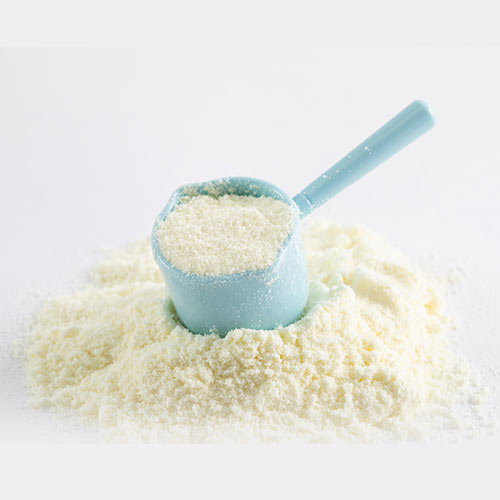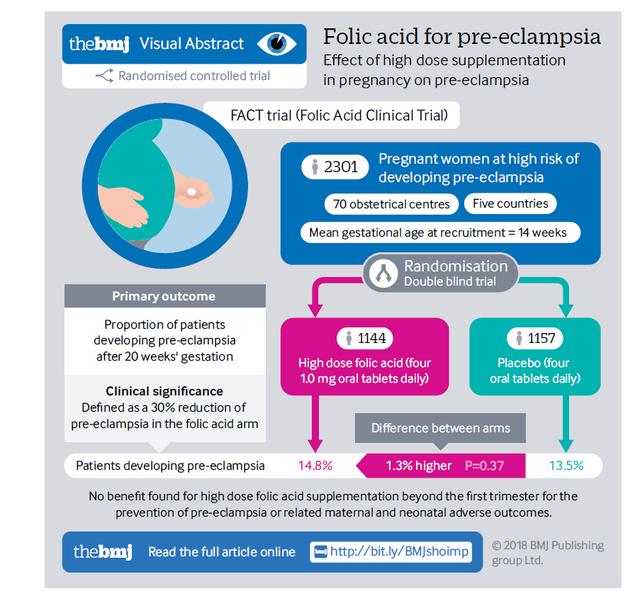North American health authorities recommend 0.4 mg/day folic acid before conception and
throughout pregnancy to reduce the risk of neural tube defects. As usual, there are folic acid and L-Methylfolate for pregnants.
Is natural (6S)-5-methyltetrahydrofolic acid as effective as synthetic folic acid in increasing serum and red blood cell folate concentrations during pregnancy?
In 2020, an article published in the "BMC (Part of Springer Nature)" pointed out that (6S)-5-methyltetrahydrofolic acid supplementation is as effective as synthetic folic acid in increasing serum and RBC folate concentrations during pregnancy, while resulting in lower UMFA. This article confirmed that high intakes of folic acid are concerning because it appears that DHFR activity is limited , and the metabolic effects of unmetabolized folic acid (UMFA) are unknown. The presence of UMFA in breastmilk is concerning because it may impair the bioavailability of folate in milk. Folate-binding protein (FBP) in breastmilk has a higher affinity for folic acid than reduced folate forms; after ingestion, folic acid may be less readily released by FBP as it passes through the gastrointestinal tract, reducing subsequent absorption and potentially impacting the infant’s folate status.
In order to solve the problem of UMFA for people with MTHFR problem , Jinkang Pharmaceutical Technology developed MEGNAFOLATE®, a patented biologically active folate, vitamin B9 (5-MTHF) . that is purer, safer, and easier to absorb . Compared with traditional folic acid, MEGNAFOLATE® structure is closer to extraction from plants. Studies have shown that MEGNAFOLATE® can be directly absorbed by the human body regardless of the influence of gene diversity of folate metabolizing enzymes. Therefore, formulations containing MEGNAFOLATE® will be better for for pregnant women and their babies.
Ultimately, a definitive trial should help to inform the safest and most effective form of folate supplementation for pregnant women and their babies.
References:
https://trialsjournal.biomedcentral.com/articles/10.1186/s13063-020-04320-3
Pietrzik K, Bailey L, Shane B. Folic acid and l-5-methyltetrahydrofolate:
comparison of clinical pharmacokinetics and pharmacodynamics. Clin Pharmacokinet. 2010;49(8):535–48.
Page R, Robichaud A, Arbuckle TE, Fraser WD, MacFarlane AJ. Total folate and unmetabolized folic acid in the breast milk of a cross-section of Canadian women. Am J Clin Nutr. 2017;105(5):1101–9.
Houghton LA, Yang J, O’Connor DL. Unmetabolized folic acid and total folate concentrations in breast milk are unaffected by low-dose folate supplements. Am J Clin Nutr. 2009;89(1):216–20.
Douglas Wilson R, Audibert F, Brock JA, Carroll J, Cartier L, Gagnon A, et al. Preconception folic acid and multivitamin supplementation for the primary and secondary prevention of neural tube defects and other folic acid-sensitive
congenital anomalies. J Obstet Gynaecol Canada. 2015;37(6):534–49.
Verwei M, Arkbåge K, Mocking H, Havenaar R, Groten J. The binding of folic acid and 5-methyltetrahydrofolate to folate-binding proteins during gastric passage differs in a dynamic in vitro gastrointestinal model. J Nutr. 2004; 134(1):31–7.
Nygren-Babol L, Jägerstad M. Folate-binding protein in milk: a review of biochemistry, physiology, and analytical methods. Crit Rev Food Sci Nutr. 2012;52(5):410–25.

 English
English Español
Español  Português
Português  русский
русский  Français
Français  日本語
日本語  Deutsch
Deutsch  tiếng Việt
tiếng Việt  Italiano
Italiano  Nederlands
Nederlands  ภาษาไทย
ภาษาไทย  Polski
Polski  한국어
한국어  Svenska
Svenska  magyar
magyar  Malay
Malay  বাংলা ভাষার
বাংলা ভাষার  Dansk
Dansk  Suomi
Suomi  हिन्दी
हिन्दी  Pilipino
Pilipino  Türkçe
Türkçe  Gaeilge
Gaeilge  العربية
العربية  Indonesia
Indonesia  Norsk
Norsk  تمل
تمل  český
český  ελληνικά
ελληνικά  український
український  Javanese
Javanese  فارسی
فارسی  தமிழ்
தமிழ்  తెలుగు
తెలుగు  नेपाली
नेपाली  Burmese
Burmese  български
български  ລາວ
ລາວ  Latine
Latine  Қазақша
Қазақша  Euskal
Euskal  Azərbaycan
Azərbaycan  Slovenský jazyk
Slovenský jazyk  Македонски
Македонски  Lietuvos
Lietuvos  Eesti Keel
Eesti Keel  Română
Română  Slovenski
Slovenski  मराठी
मराठी  Srpski језик
Srpski језик 








 Online Service
Online Service